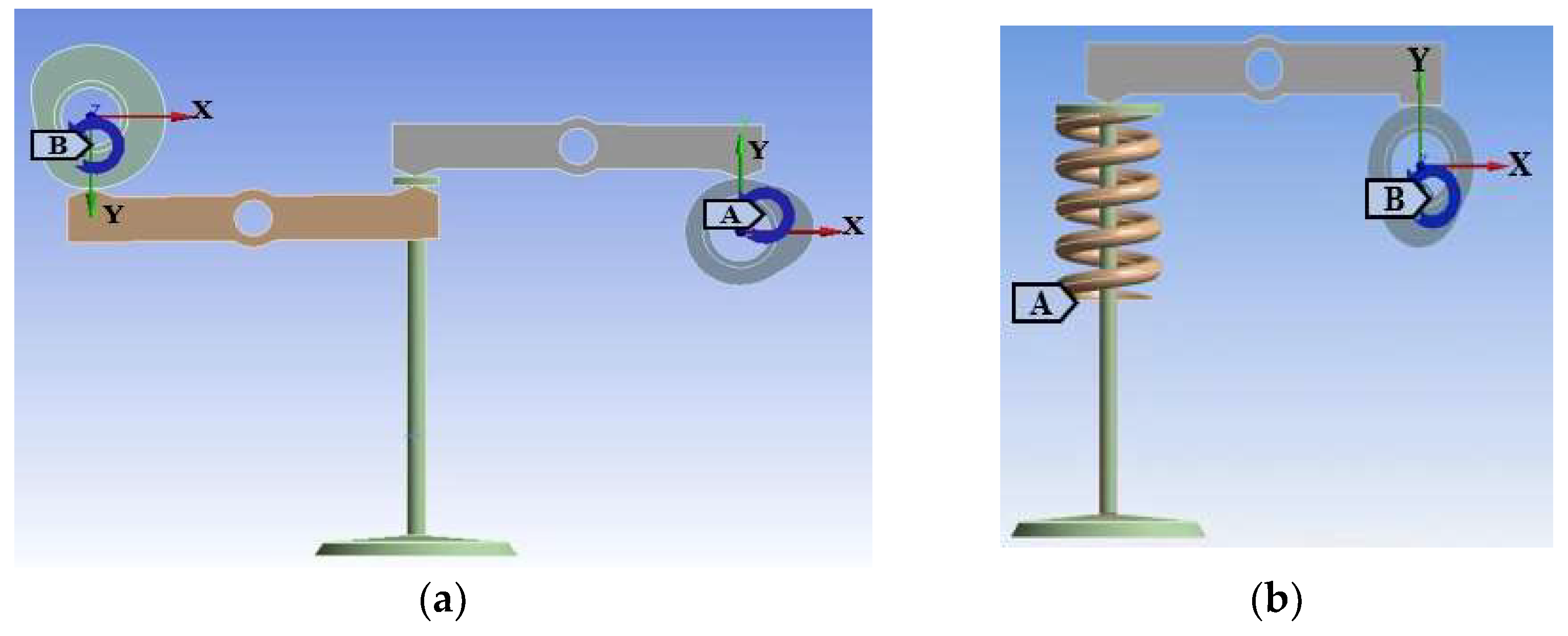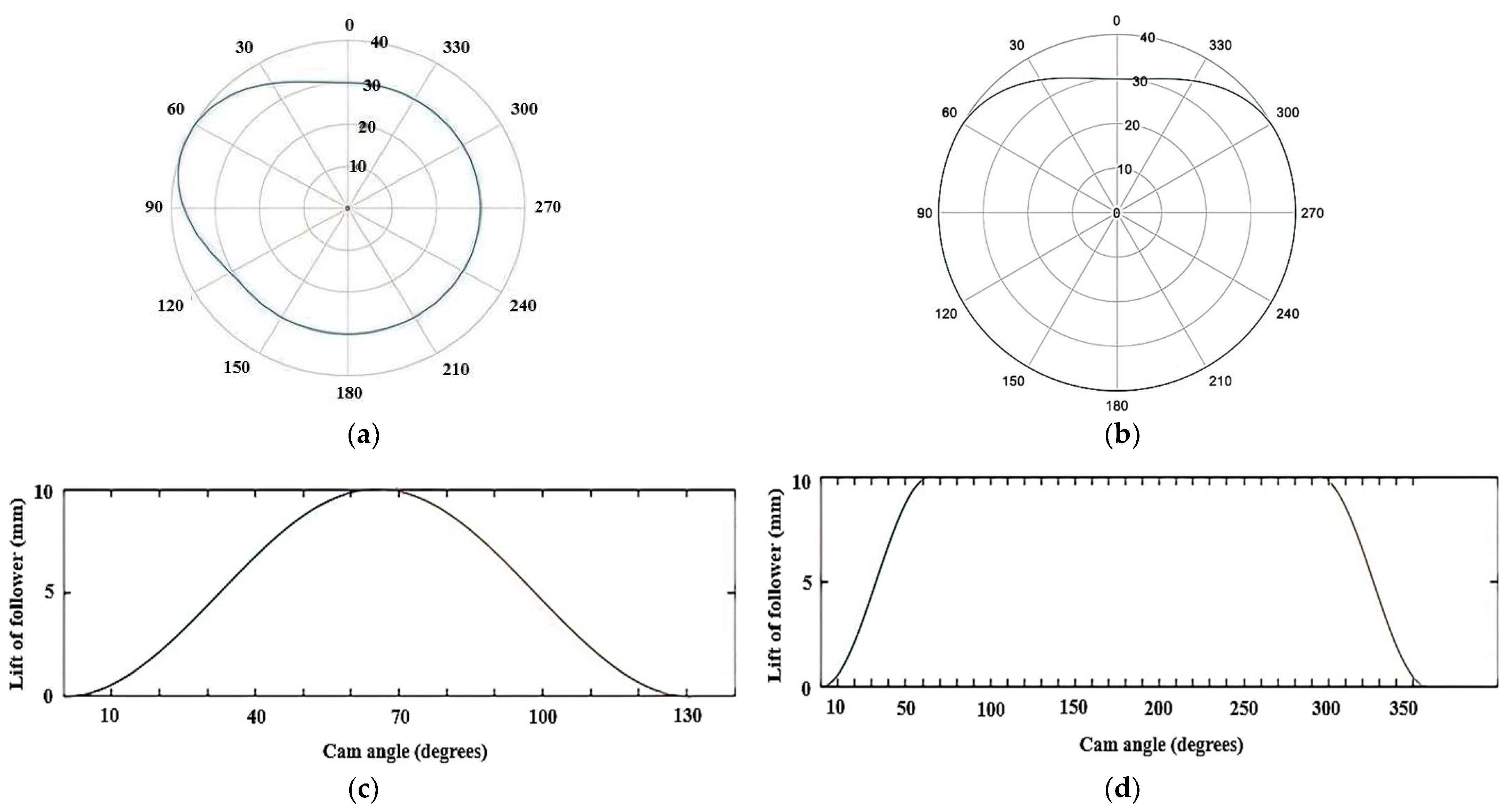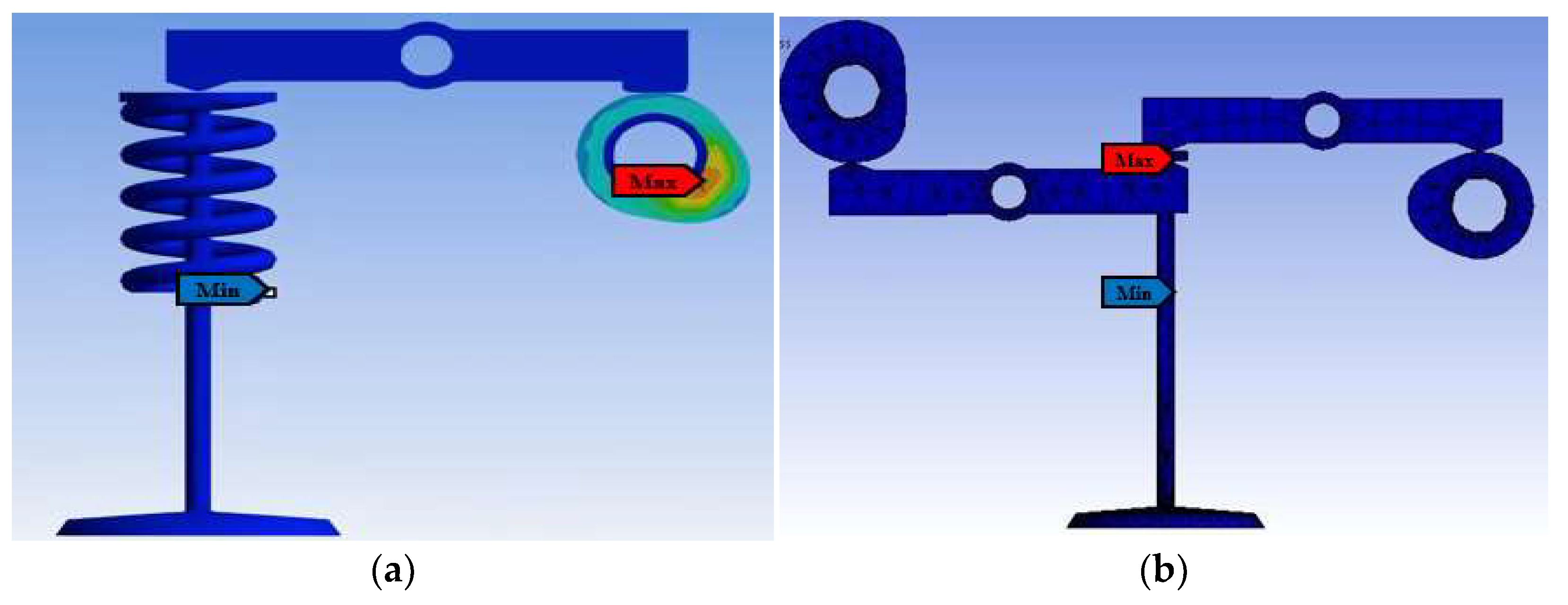A First Step towards the Performance Enhancement of IC Engines Using a Desmodromic Valve System †
Abstract
:1. Introduction
2. Methodology
2.1. FE Model and Meshing
2.2. Boundary Conditions
2.3. Regular and Desmodromic CAM Profiles
3. Results and Discussion
4. Conclusions
Author Contributions
Funding
Institutional Review Board Statement
Informed Consent Statement
Data Availability Statement
Conflicts of Interest
References
- RDahham, Y.; Wei, H.; Pan, J. Improving Thermal Efficiency of Internal Combustion Engines: Recent Progress and Remaining Challenges. Energies 2022, 15, 6222. [Google Scholar] [CrossRef]
- Rahul, W.; Sourabh, S.; Swapnil, S.; Nikhil, J. Study of Design & Manufacturing of Cam Operated Spring Less Valve System for IC Engine. IJSRDV 2020, 7, 385–388. [Google Scholar]
- Zewen, G.; Xiaonan, H.; Elspeth, K.; Jianqiao, Y. Non-linear finite element model for dynamic analysis of high-speed valve train and coil collisions. Int. J. Mech. Sci. 2020, 173, 105476. [Google Scholar]
- Gu, Z. Static and Dynamic Analysis of Nonlinear Valve Springs Based on Finite Element Analysis and Machine Learning Algorithm. Ph.D. Thesis, Lancaster University, Lancaster, UK, 2022; p. 201. [Google Scholar]
- Hu, B.; Li, Y.; Yin, L. Theoretical and Experimental Analysis of Dynamic Characteristics for a Valve Train System. Sensors 2021, 21, 6328. [Google Scholar] [CrossRef]




Disclaimer/Publisher’s Note: The statements, opinions and data contained in all publications are solely those of the individual author(s) and contributor(s) and not of MDPI and/or the editor(s). MDPI and/or the editor(s) disclaim responsibility for any injury to people or property resulting from any ideas, methods, instructions or products referred to in the content. |
© 2023 by the authors. Licensee MDPI, Basel, Switzerland. This article is an open access article distributed under the terms and conditions of the Creative Commons Attribution (CC BY) license (https://creativecommons.org/licenses/by/4.0/).
Share and Cite
Rasheed, S.; Haroon, M.; Irfan, M.; Ibrar, Z.; Ramzan, U.B.; Hanif, D. A First Step towards the Performance Enhancement of IC Engines Using a Desmodromic Valve System. Eng. Proc. 2023, 45, 46. https://doi.org/10.3390/engproc2023045046
Rasheed S, Haroon M, Irfan M, Ibrar Z, Ramzan UB, Hanif D. A First Step towards the Performance Enhancement of IC Engines Using a Desmodromic Valve System. Engineering Proceedings. 2023; 45(1):46. https://doi.org/10.3390/engproc2023045046
Chicago/Turabian StyleRasheed, Shummaila, Muhammad Haroon, Muhammad Irfan, Zayyan Ibrar, Usama Bin Ramzan, and Danish Hanif. 2023. "A First Step towards the Performance Enhancement of IC Engines Using a Desmodromic Valve System" Engineering Proceedings 45, no. 1: 46. https://doi.org/10.3390/engproc2023045046
APA StyleRasheed, S., Haroon, M., Irfan, M., Ibrar, Z., Ramzan, U. B., & Hanif, D. (2023). A First Step towards the Performance Enhancement of IC Engines Using a Desmodromic Valve System. Engineering Proceedings, 45(1), 46. https://doi.org/10.3390/engproc2023045046





